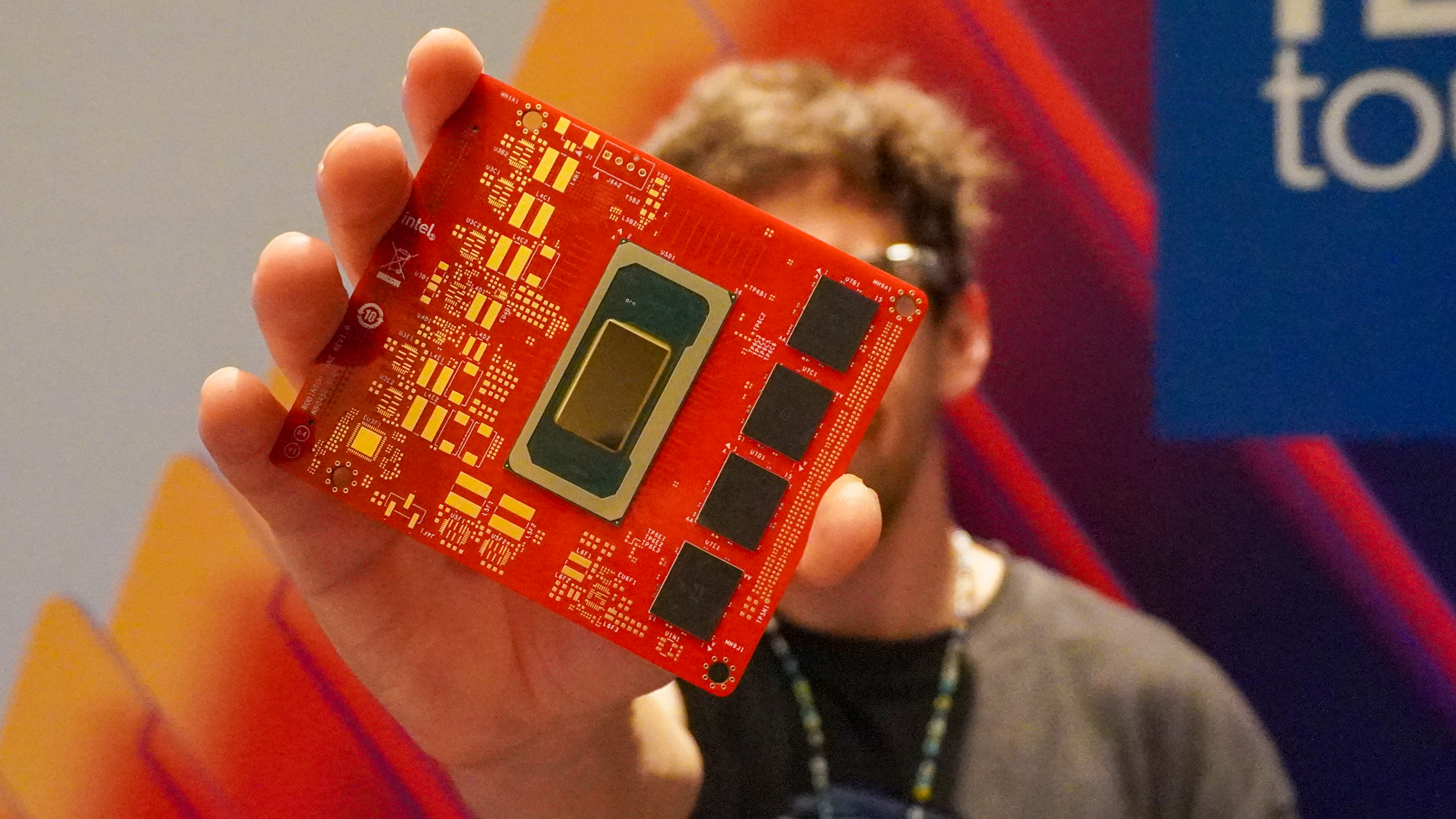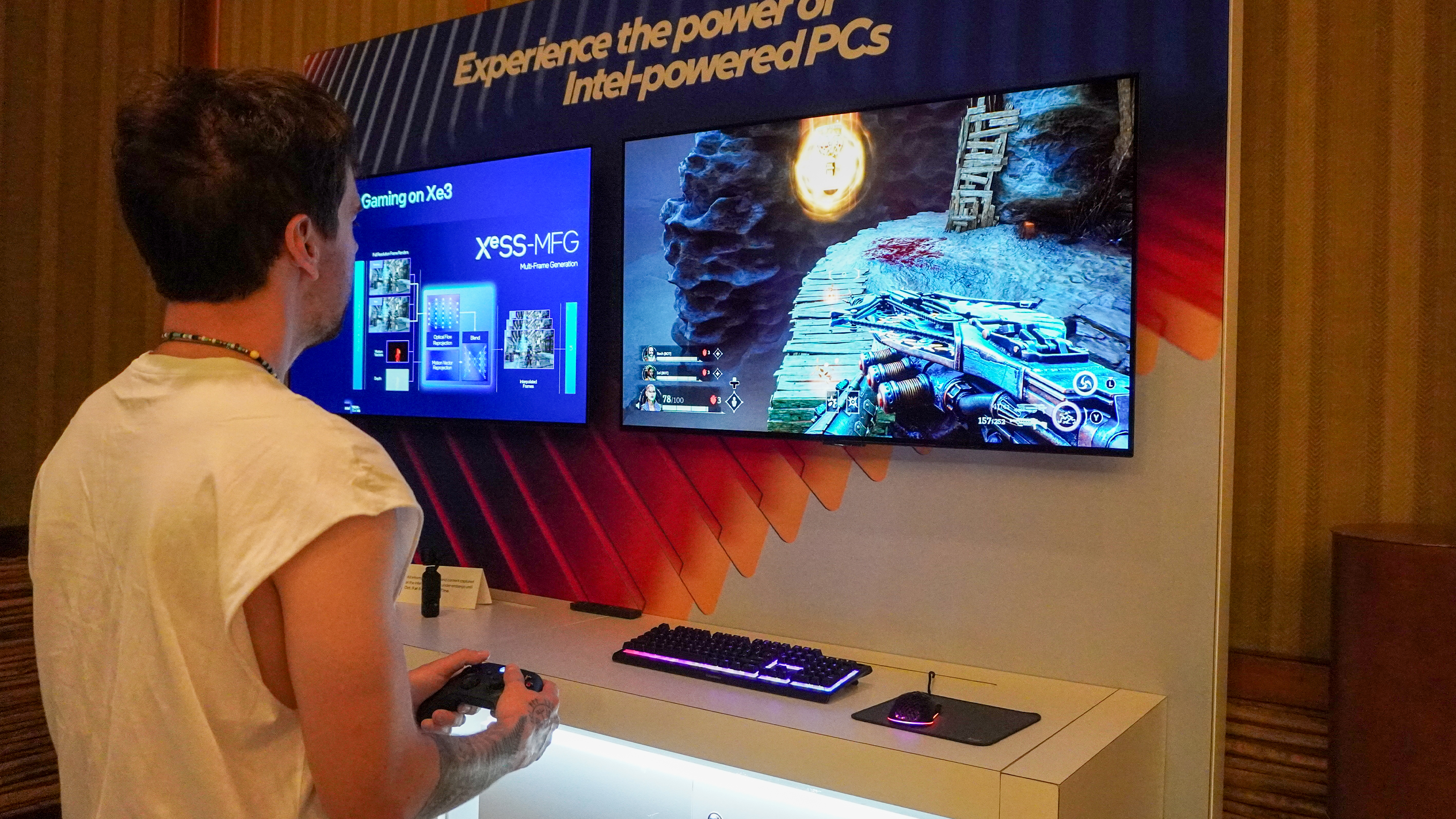Intel's Panther Lake chip graphics look 50% faster in early benchmarks — but it still falls behind a big rival
Your next laptop could get a massive 50% graphics boost thanks to Intel

With Intel’s Panther Lake chip ready to deliver a major uplift in performance to laptops in 2026, we've now seen early graphics performance tests for what this CPU can deliver — and it already looks to crush Lunar Lake.
Benchmarks for Intel's flagship Panther Lake Core Ultra X9 388H processor have been shared by tech site LaptopReview, showcasing a 50% increase in graphics performance compared to Lunar Lake. According to its 3DMark results, it achieved a TimeSpy score of 6,300, with Lunar Lake reaching 4,000, as per the report.
This is a substantial improvement over Intel's Lunar Lake (Core Ultra 200V series) and Arrow Lake (Core Ultra 200H and HX) chips, and is on point with the tests we've seen when going hands-on with Panther Lake. This already shows that the next-gen CPU should deliver massive gains on PCs, but also power the future of gaming handhelds.

As noted in the report, Panther Lake's TimeSpy score even exceeds an RTX 3050 GPU. In our lab tests, we've seen an RTX 3050 Ti achieve a score of 4,637, so this checks out. However, it's still behind the likes of an RTX 4050, with the Acer Nitro V 15 we tested scoring 7,415.
We got a first look at Intel's Panther Lake series, and were impressed with the SoC's GPU onboard offering the new Xe3 graphics architecture and up to 12 Xe cores and 12 Ray Tracing Units. Over its Lunar Lake predecessor, this already aims to deliver big performance gains.
We've already expected 50% more GPU performance compared to Lunar Lake, and 40% higher performance per watt compared to Arrow Lake H series. Plus, its advanced XeSS 3 tech offers multi-frame generation for even higher frame rate potential in games. That's similar to Nvidia's RTX 50-series and DLSS 4, bringing Multi Frame Generation.
AMD may still have the upper hand

Despite the impressive benchmarks, the high-end Panther Lake Core Ultra X9 388H may fall behind its competition in AMD's Strix Halo APU.
Get instant access to breaking news, the hottest reviews, great deals and helpful tips.
We tested AMD's Ryzen AI Max+ 395 processor in the Framework Desktop, and in the 3DMark TimeSpy benchmark, it scored 11,530. There's clearly a significant gap in graphics performance, but considering this is a desktop, whereas Panther Lake is set to power laptops, this isn't a huge surprise.
It's still early days, and it's worth noting that Intel's Panther Lake runs on 45 watts compared to AMD's Ryzen AI Max+ 300 series chips can run up to 120 watts. There are still more tests to be done, but from the improvements these benchmarks show, Panther Lake is looking to be one powerful chip to give gaming performance a boost in notebooks.
There's plenty more to find out about Team Blue's latest Panther Lake chips, and how Nvidia and Intel's partnership will see these chips see even further leaps in performance.
Follow Tom's Guide on Google News, or add us as a preferred source, to get our up-to-date news, analysis, and reviews in your feeds. Make sure to click the Follow button!
More from Tom's Guide
- Intel Panther Lake could power the future of handheld gaming — here's why AMD should be nervous
- I benchmarked the Snapdragon X2 Elite Extreme — here's how it compares to Apple M4, Intel Core Ultra 9 and more
- Wi-Fi 8 just got its first-ever demo — here's what makes it different

Darragh is Tom’s Guide’s Computing Editor and is fascinated by all things bizarre in tech. His work can be seen in Laptop Mag, Mashable, Android Police, Shortlist Dubai, Proton, theBit.nz, ReviewsFire and more. When he's not checking out the latest devices and all things computing, he can be found going for dreaded long runs, watching terrible shark movies and trying to find time to game
You must confirm your public display name before commenting
Please logout and then login again, you will then be prompted to enter your display name.










